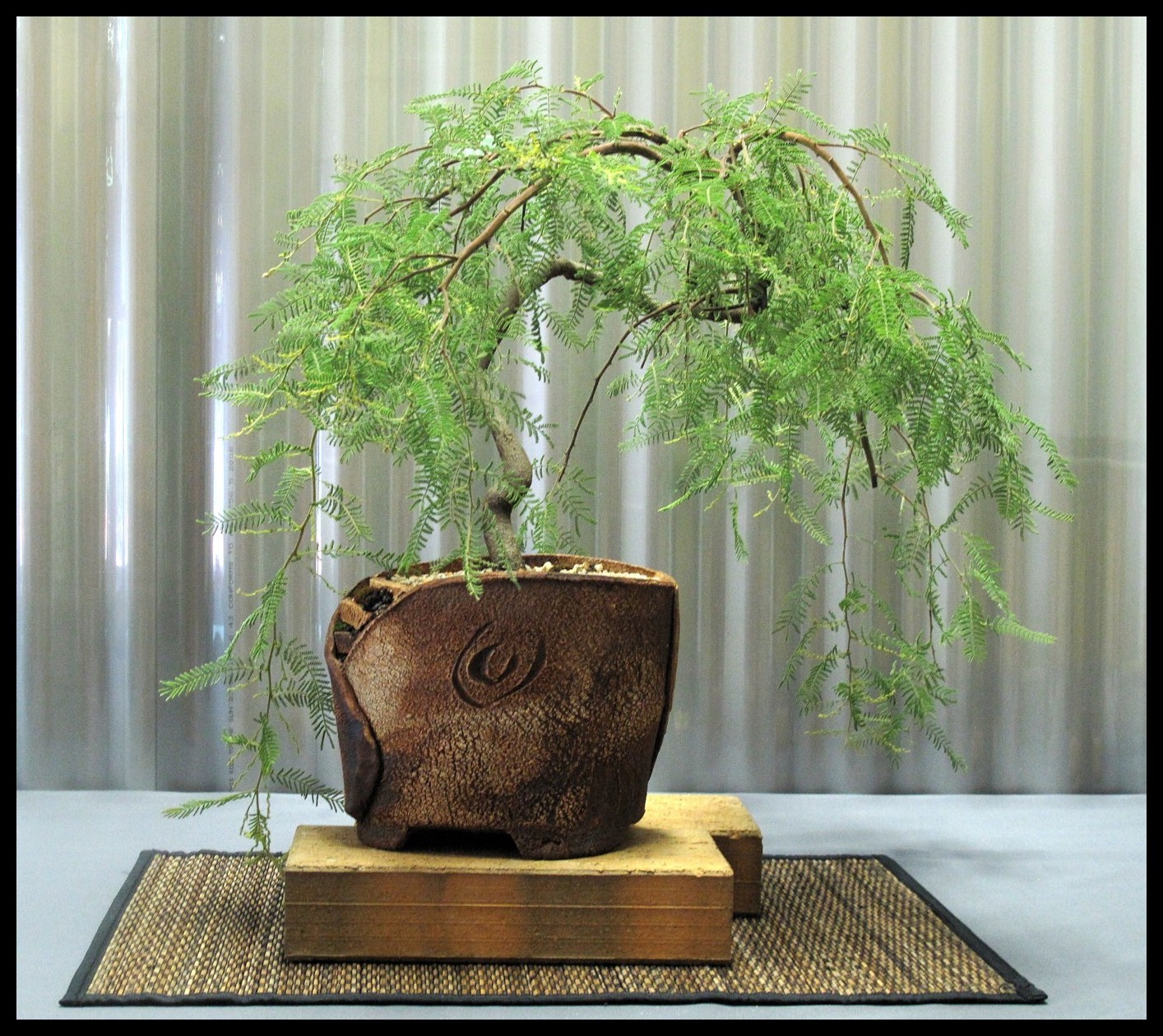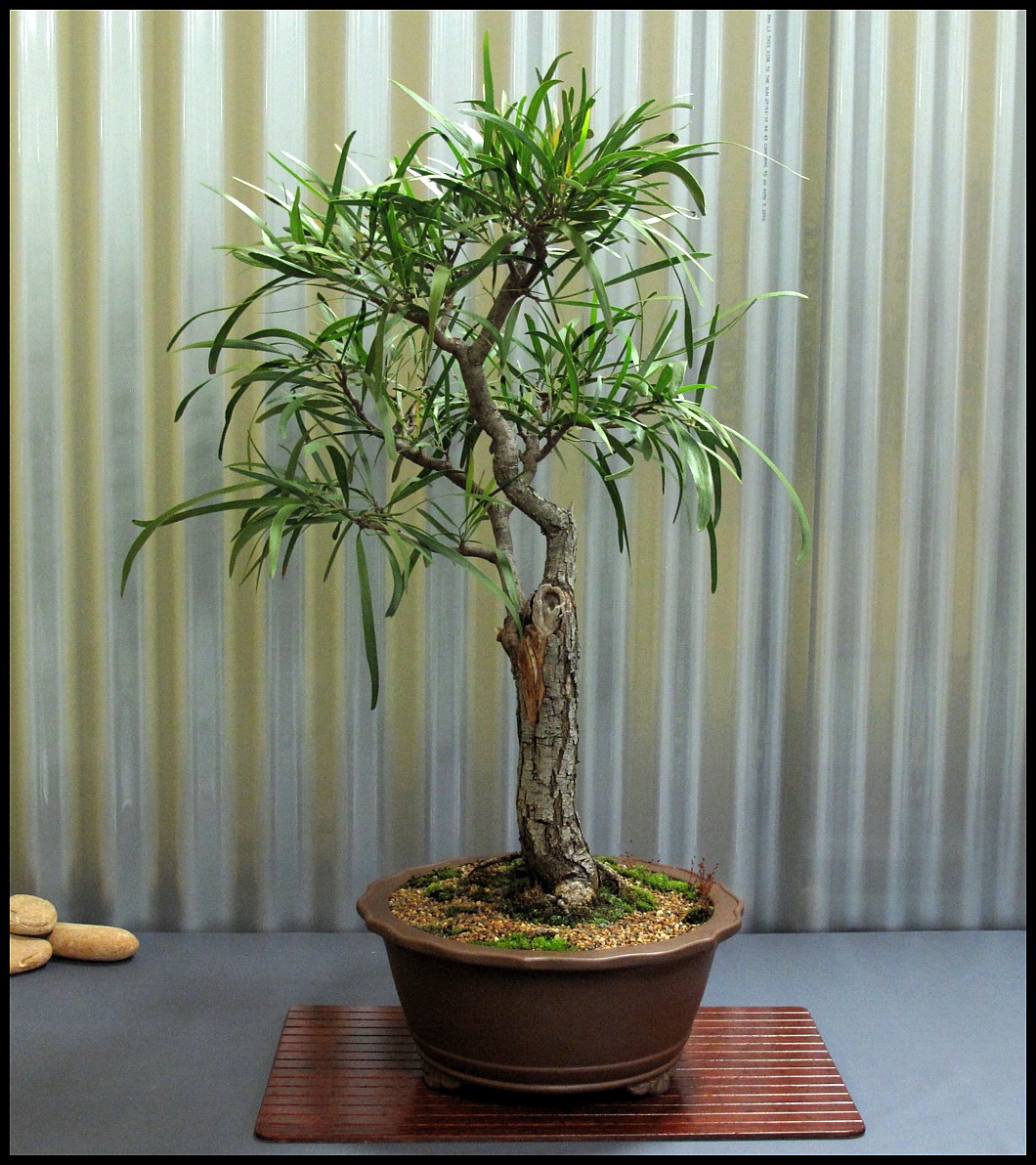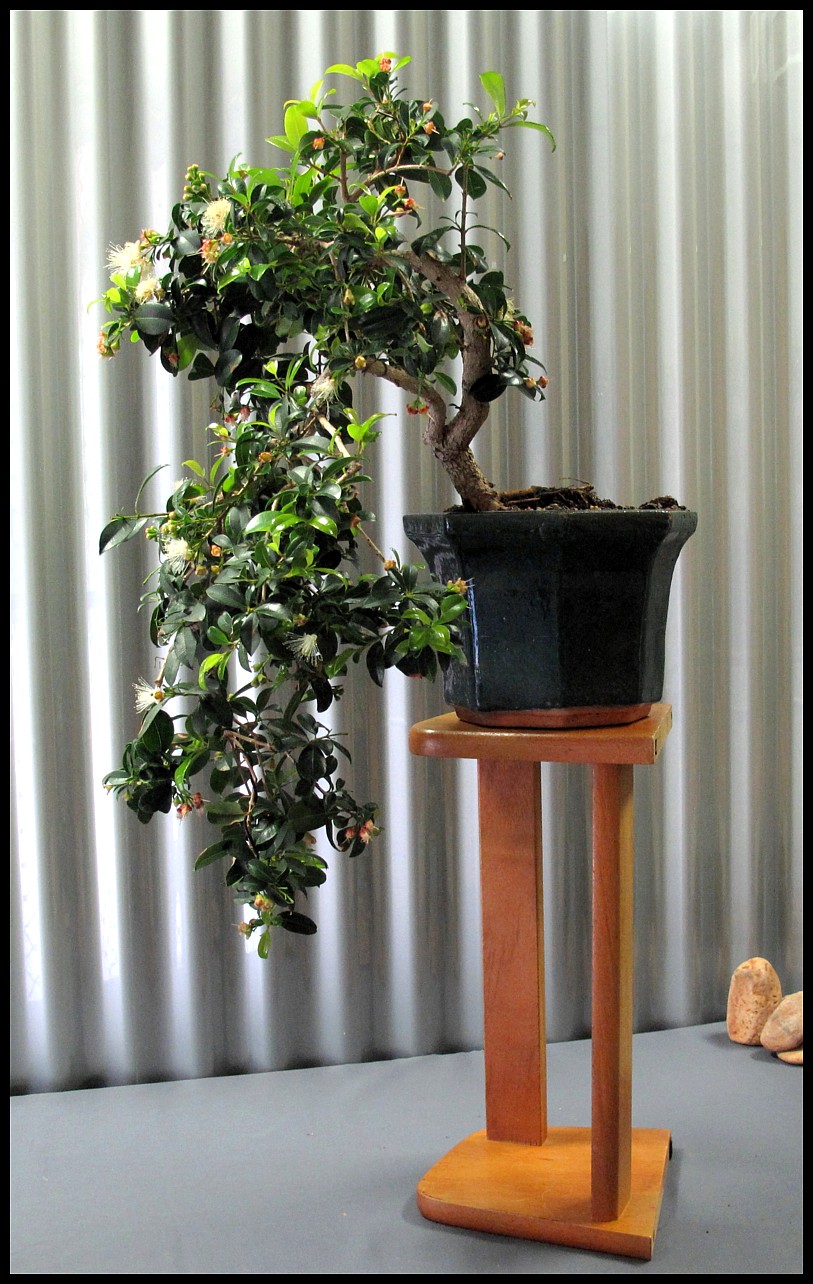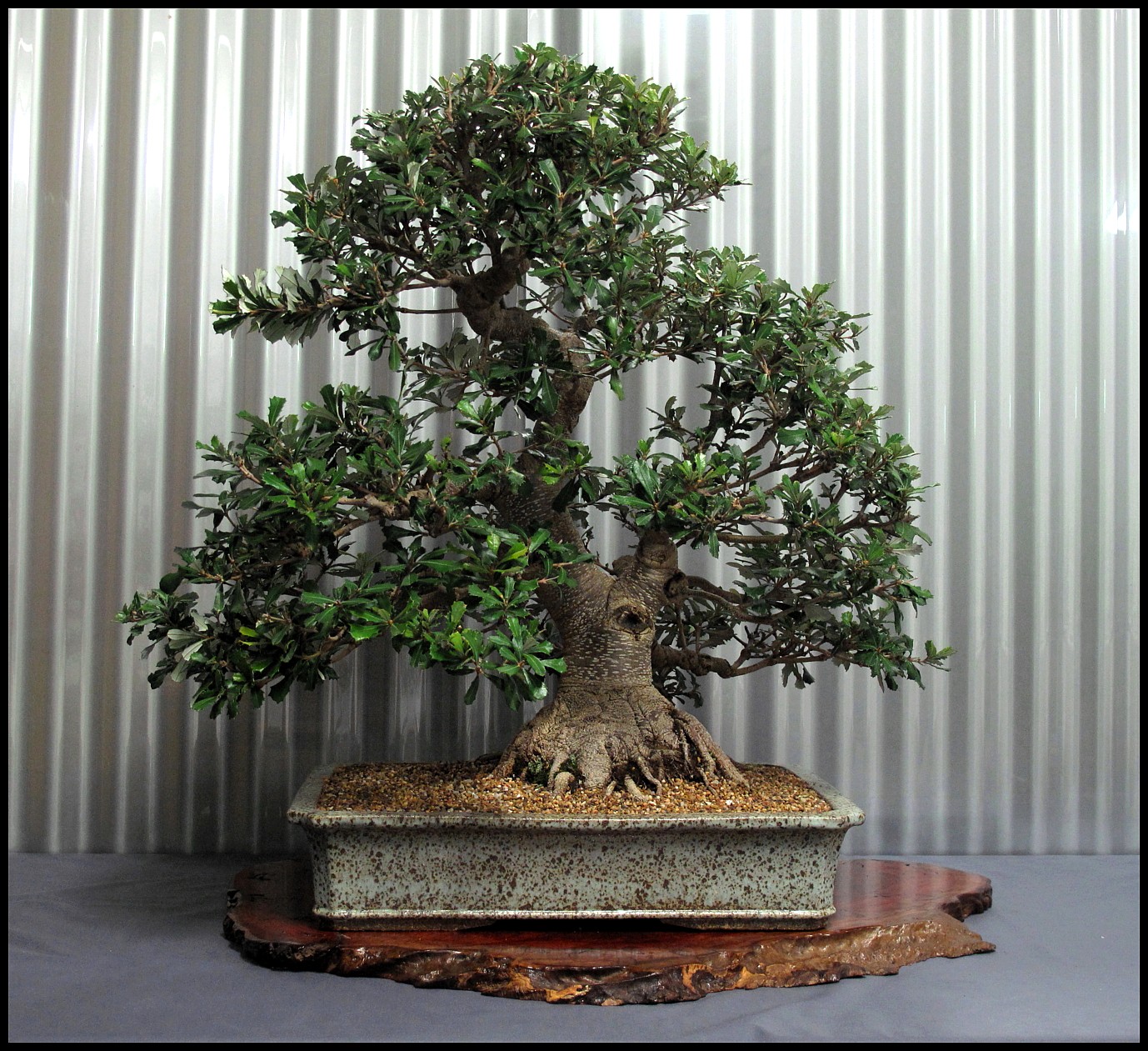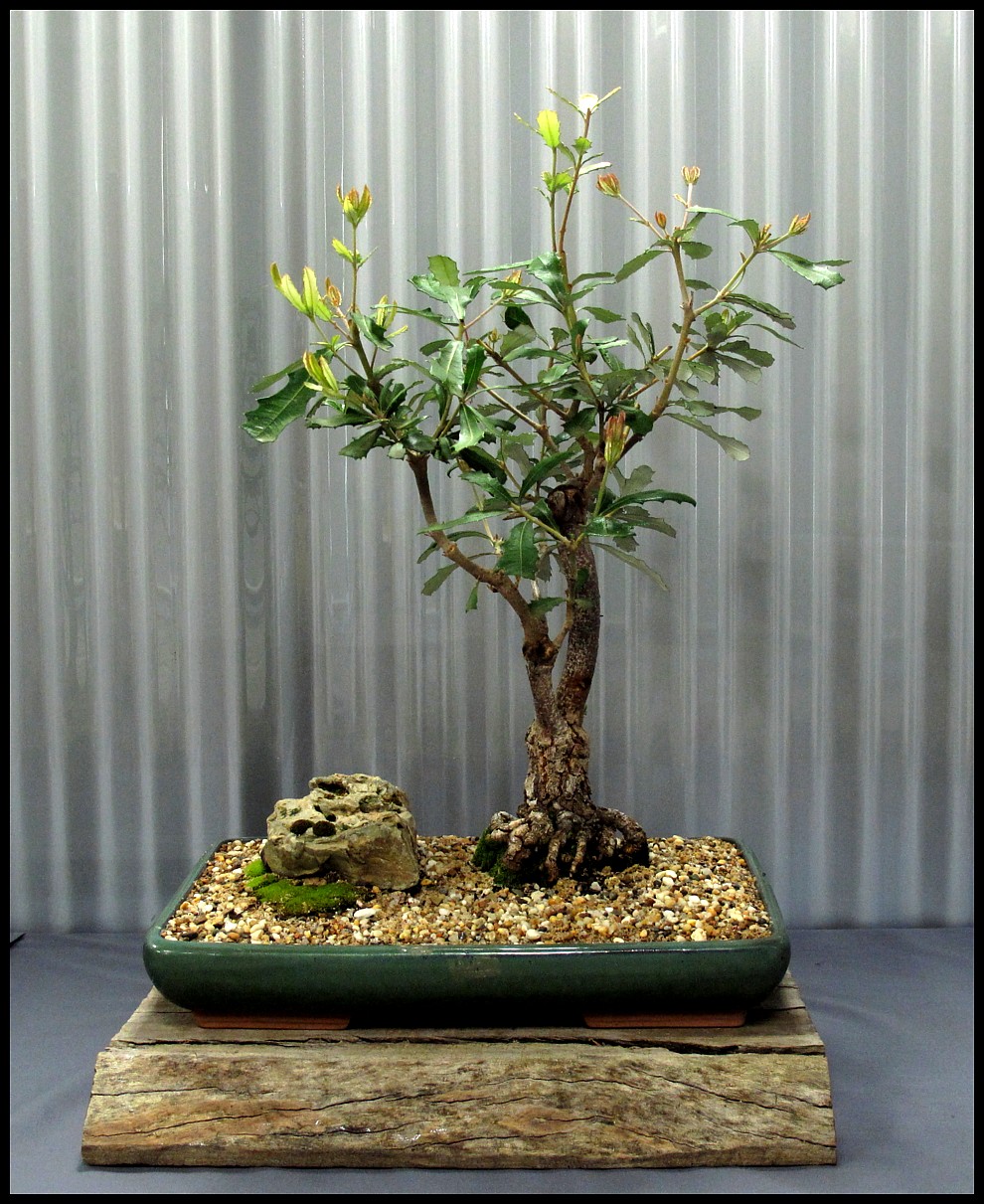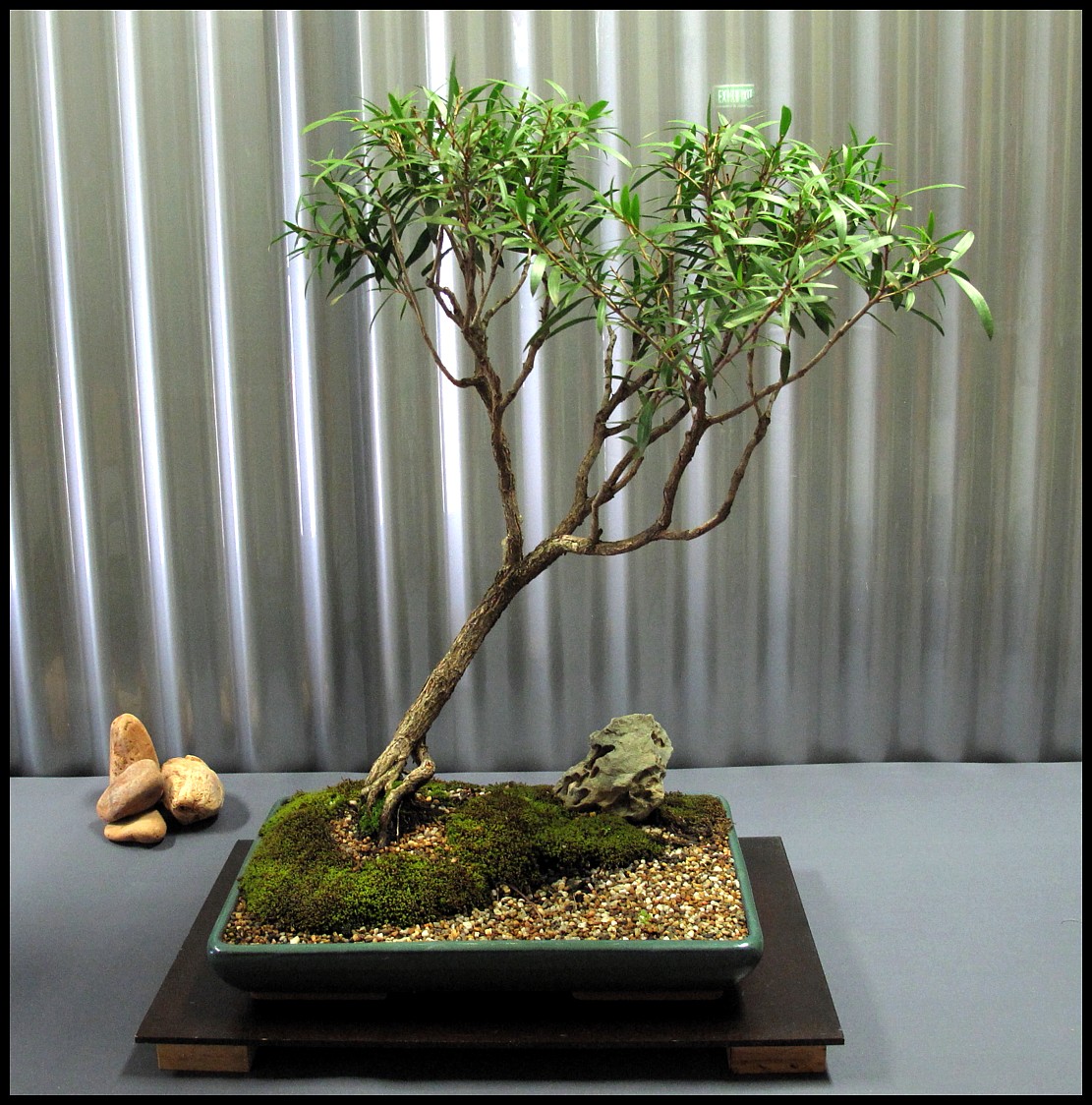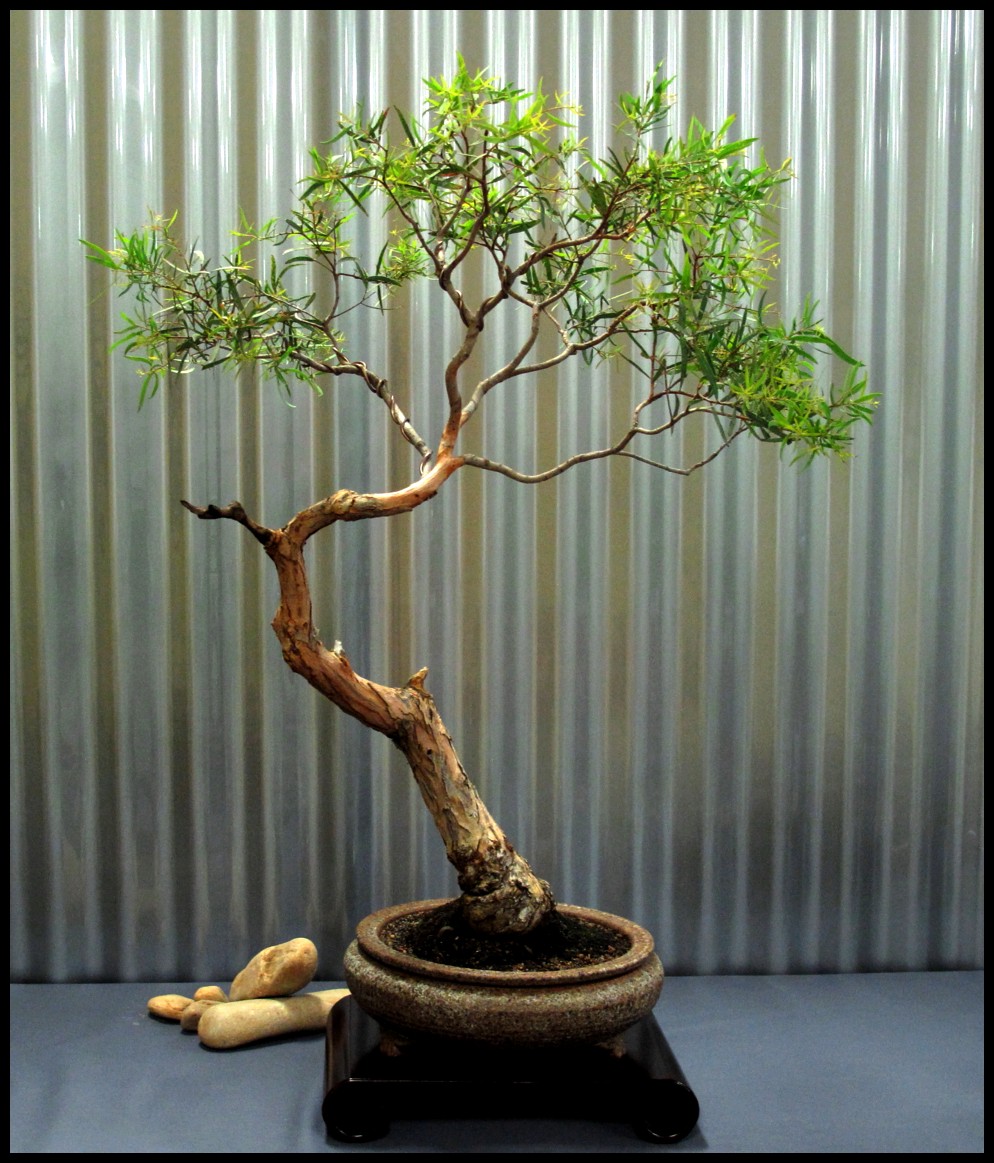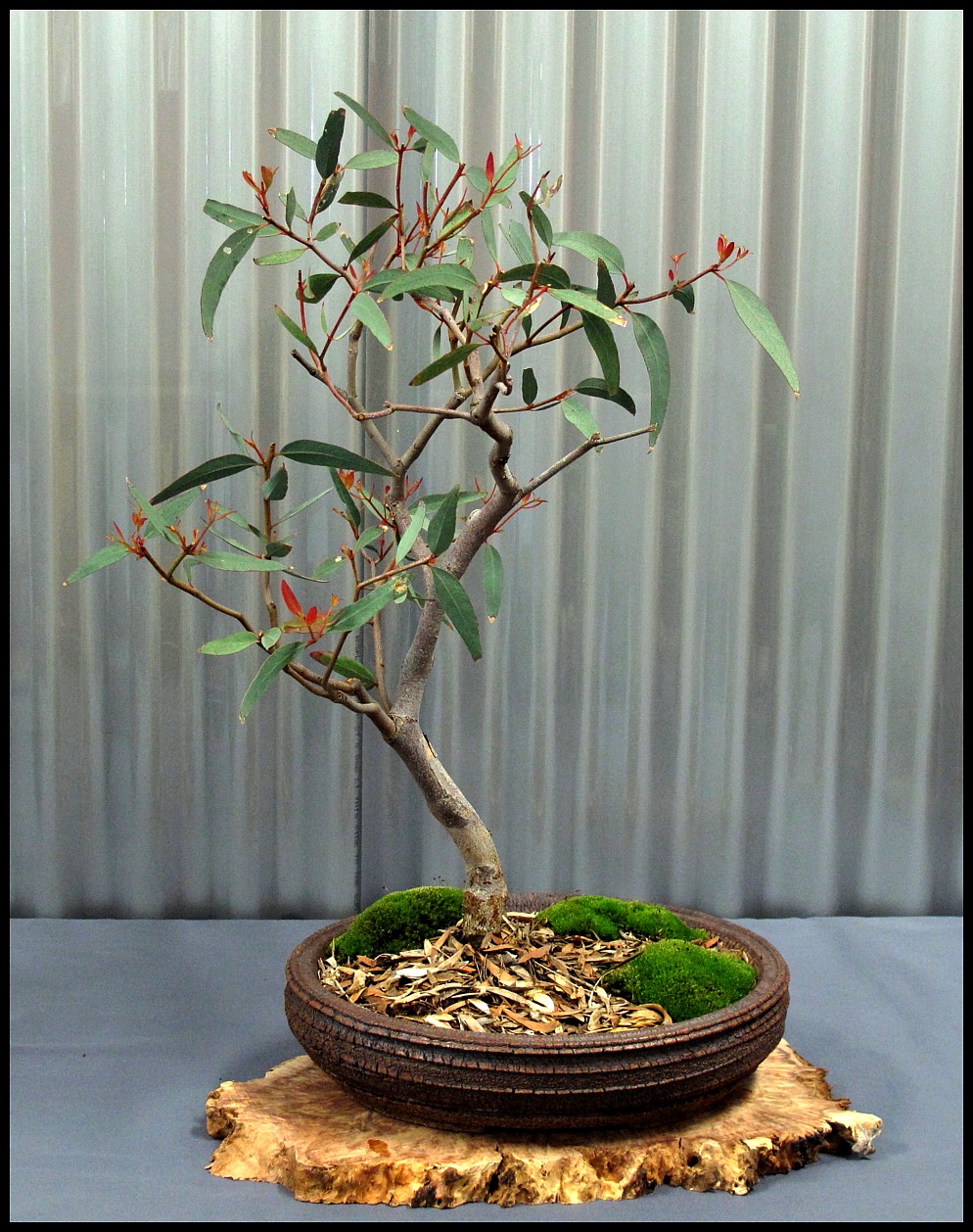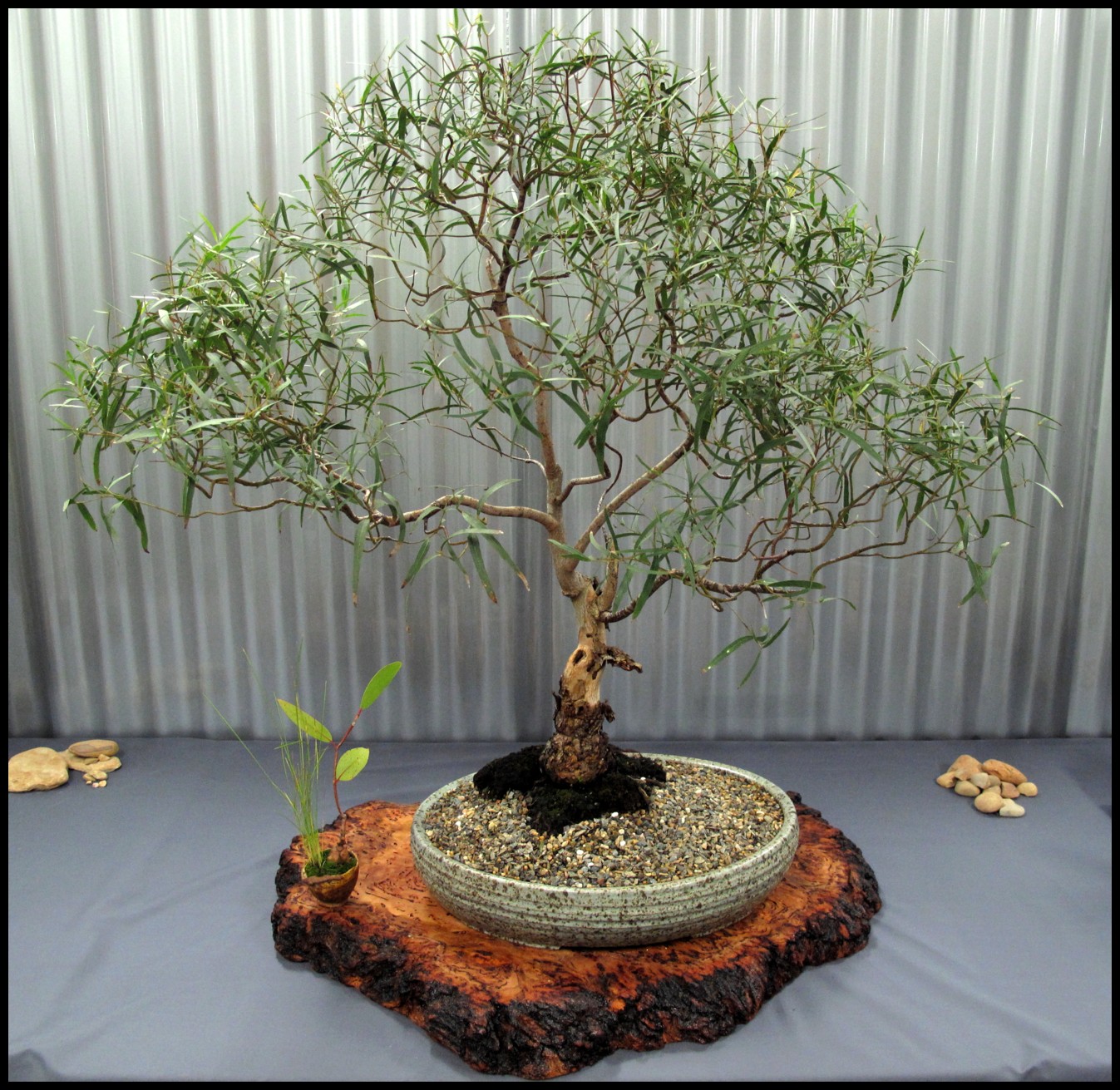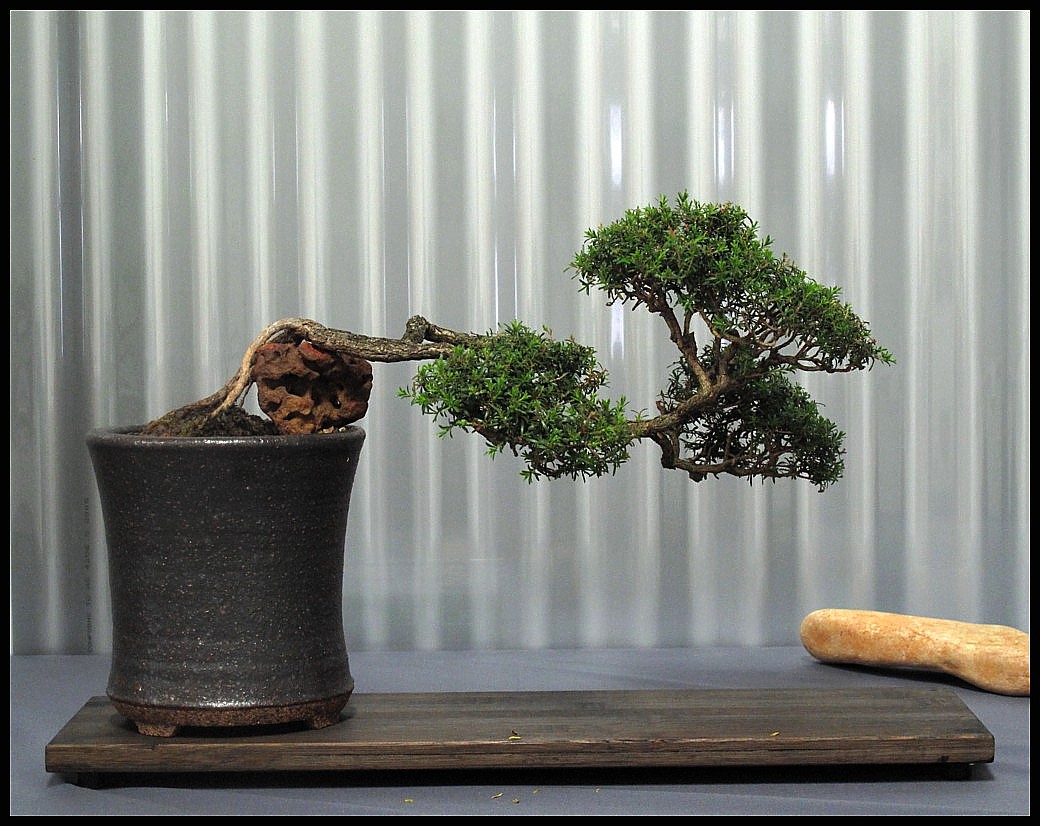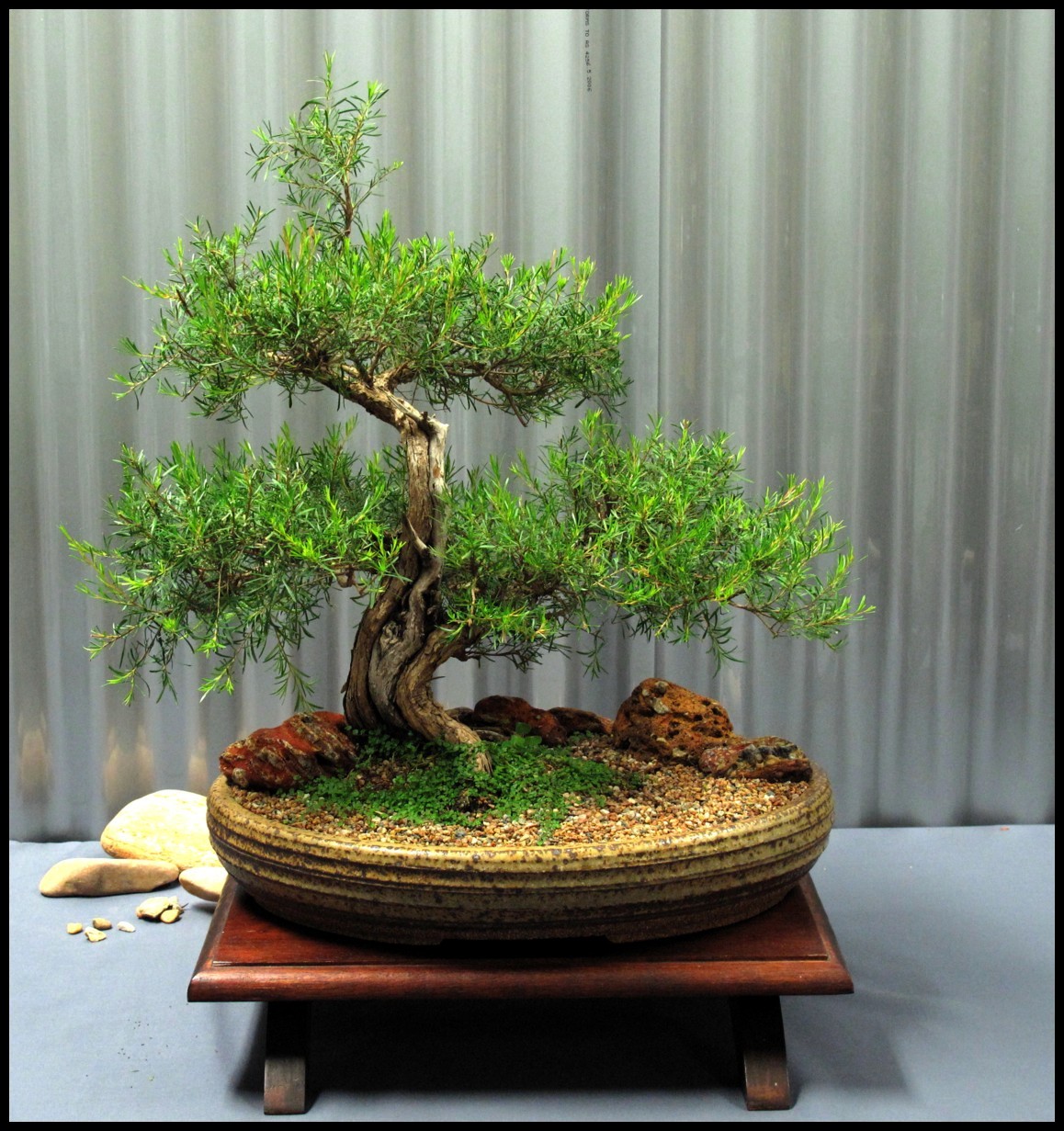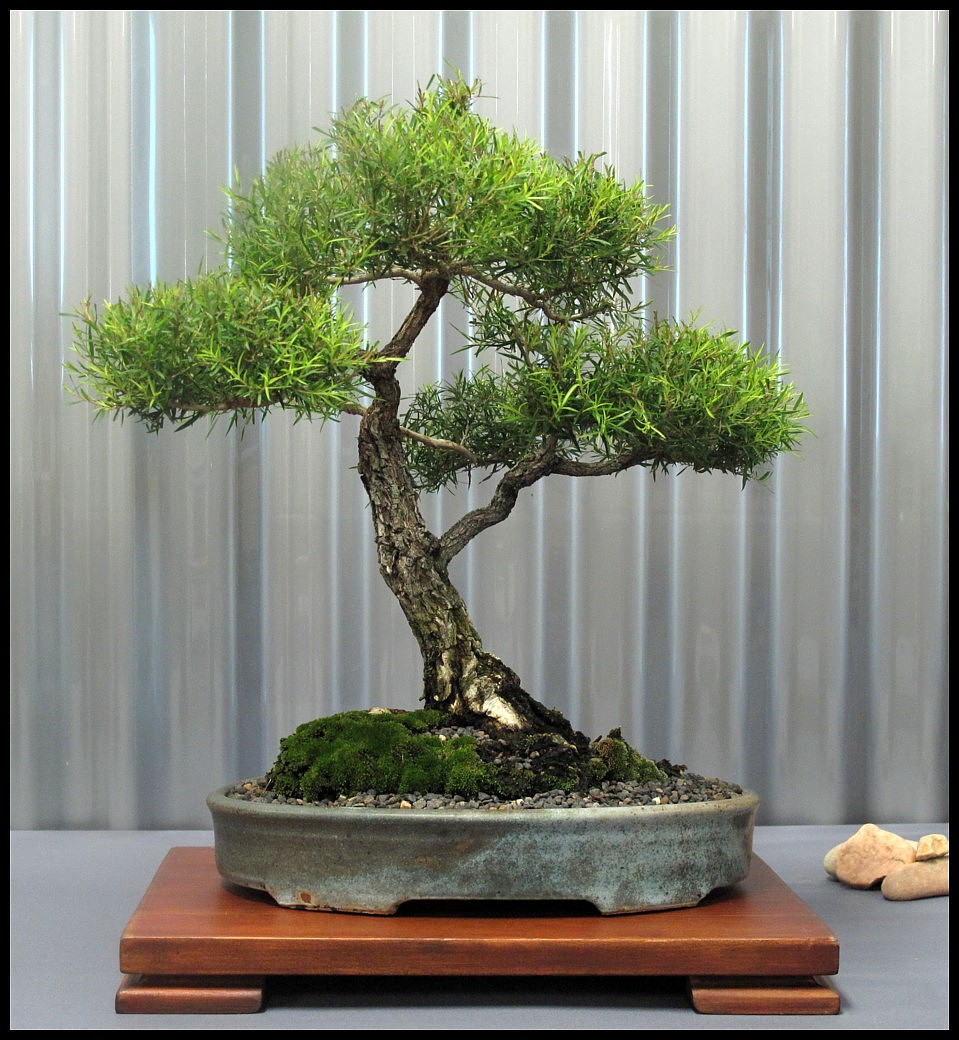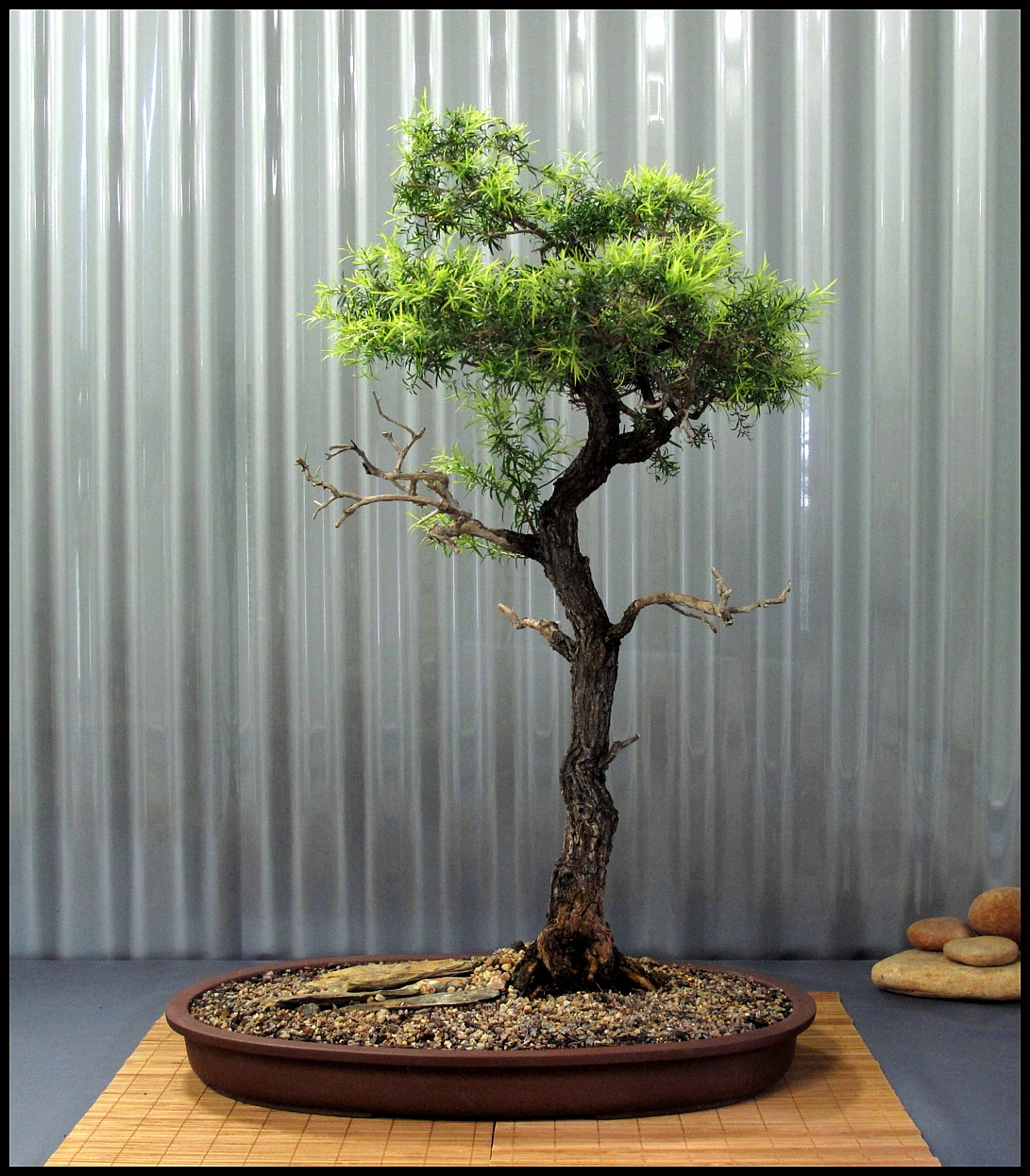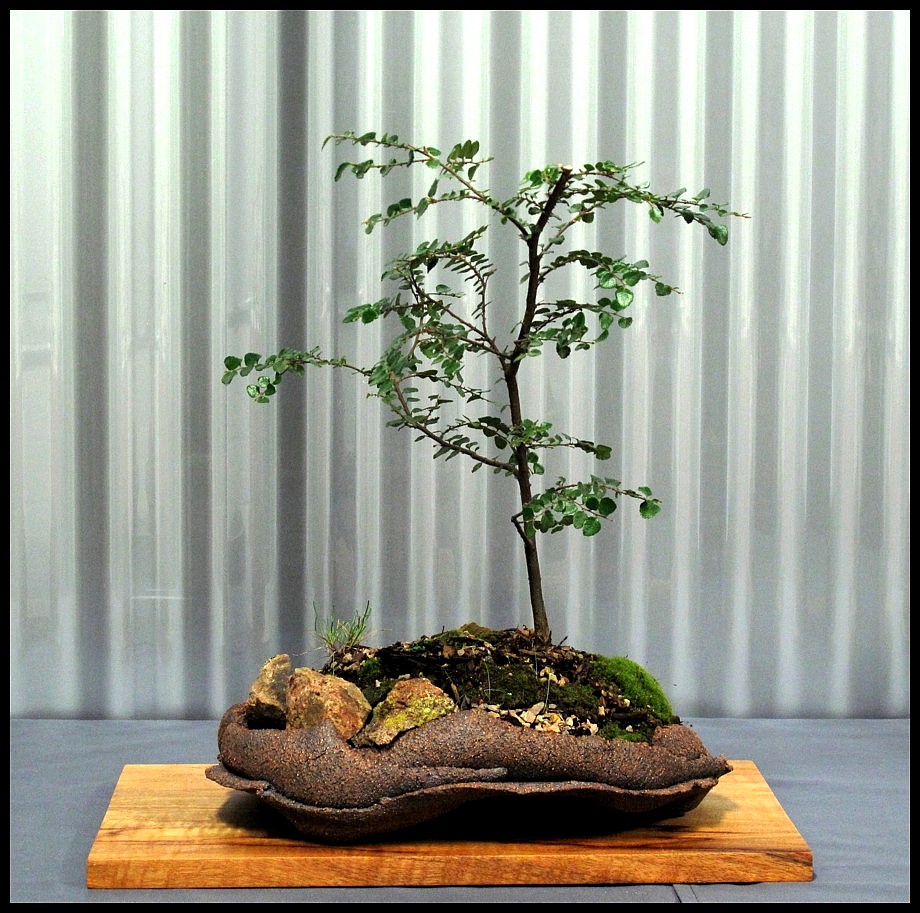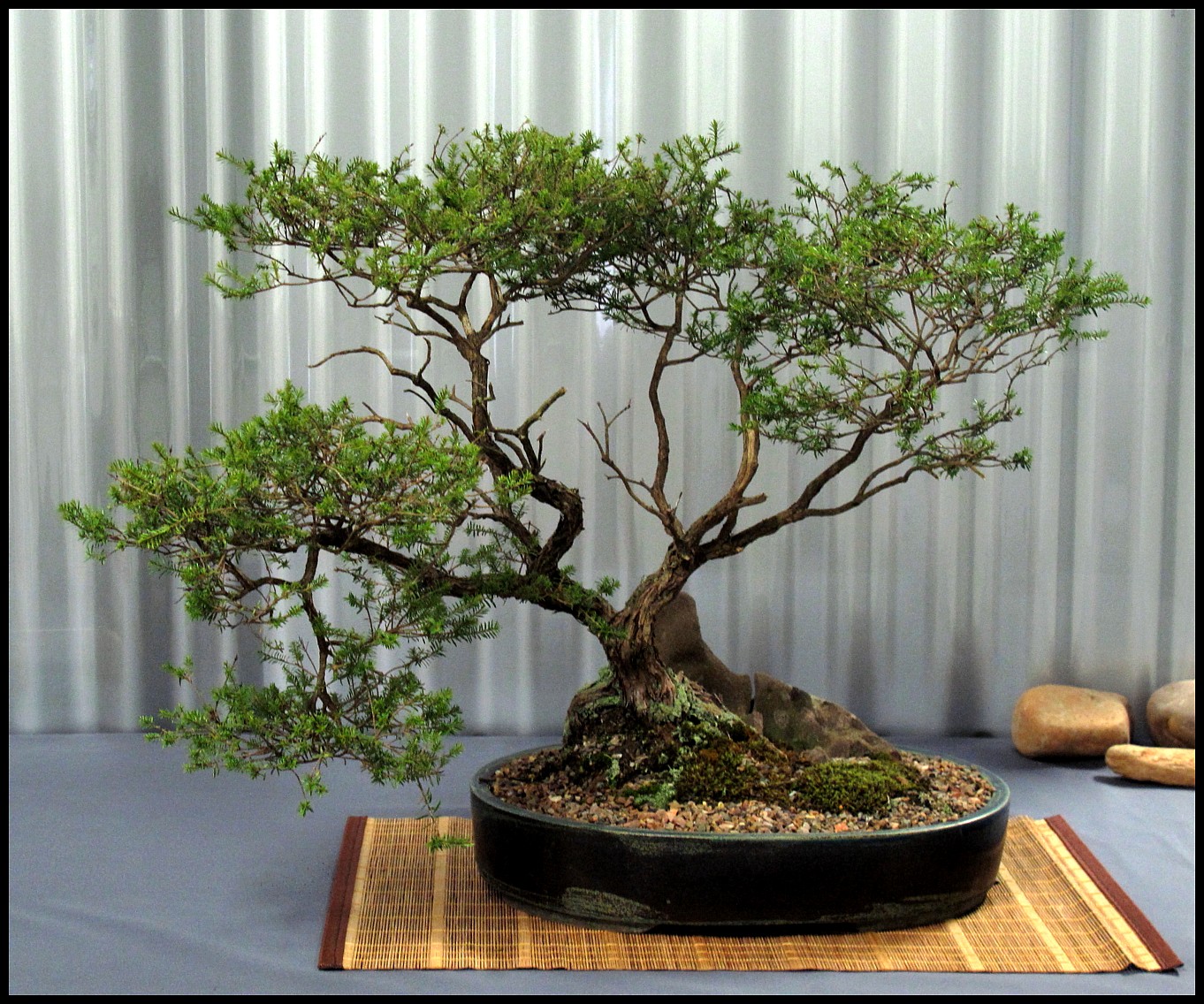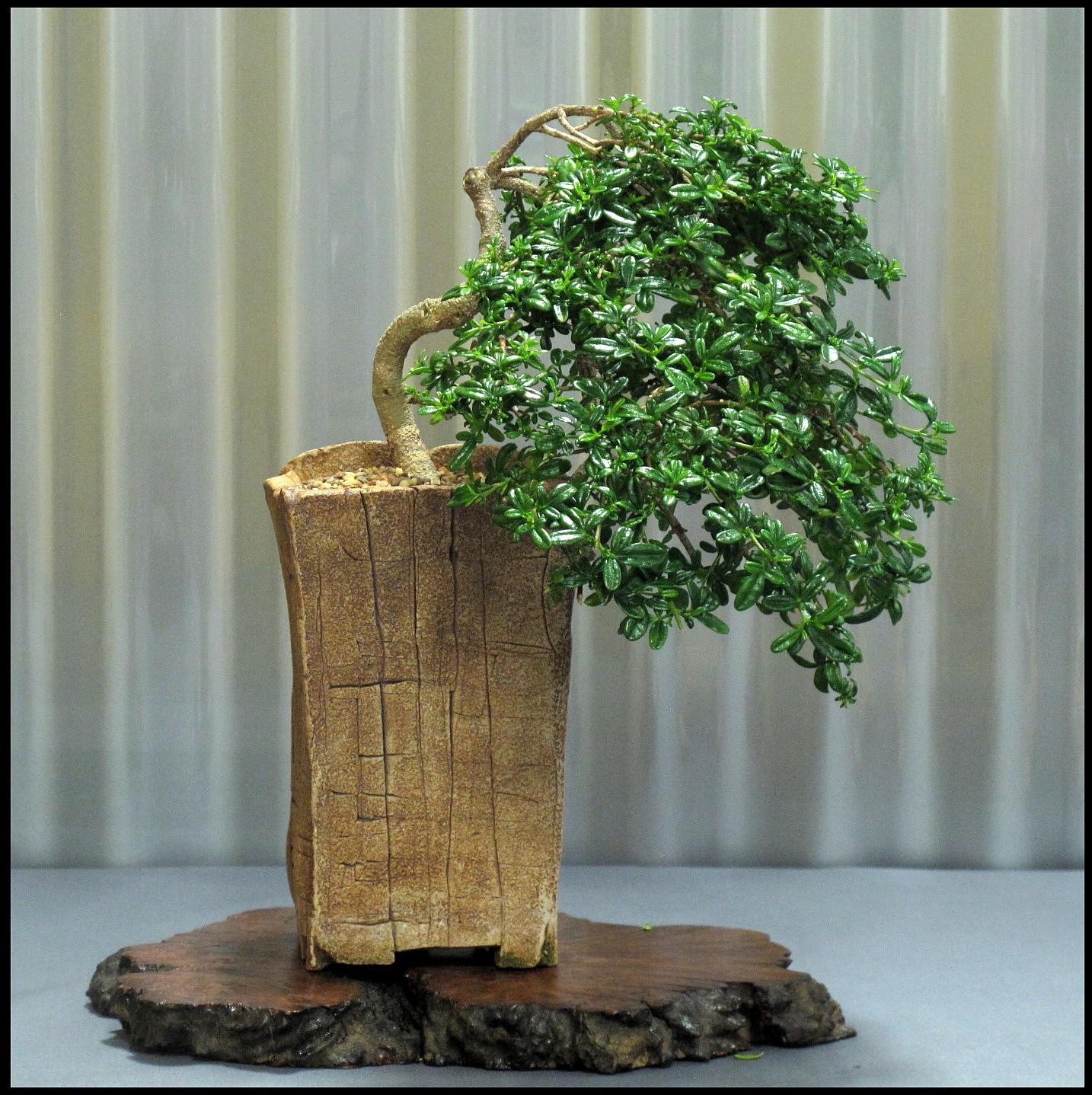Australian Native Plants as Bonsai
Catalogue Notes from the Canberra Bonsai Society's
March 2010
Australian Plants as Bonsai Exhibition
held at the Australian National Botanic Gardens.
Click on photo for larger view
(and click on "back" button on large-view photo to return to this page)
Plant Species in this Exhibition |
|
Acmena smithii |
Ficus rubiginosa (4) Kunzea ambigua |
Nothofagus cunninghamii Sannantha sp. Tristaniopsis laurina (2) Zeria prostrata |
Photographs by members of the Canberra Bonsai Society


